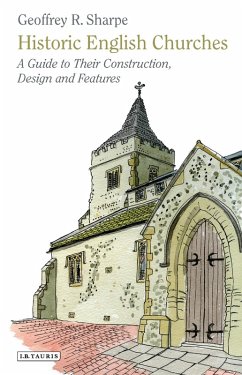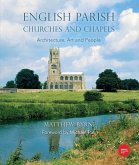The ancient churches and cathedrals of England's towns and countryside are among the glories of our national heritage, the church spire one of the quintessential features of the landscape. Yet how were our ancestors able to construct these often substantial edifices without the benefit of modern techniques? How did medieval masons plan, design and oversee their construction? What methods of construction were used to achieve the magnificent church spires and ceilings that we marvel at today? Geoffrey R. Sharpe brings more that forty years of experience of managing and caring for historic buildings to provide a unique guide to the design and construction of our historic churches and cathedrals.
Building a cathedral could require a workforce of 300 to 400 men, the quarrying of 80,000 tons of stone and involve the felling of 1500 trees. How all this was organized, managed and realized is explained in this compelling volume. The author deals with all aspects - from original planning and preparation, to the final construction and decoration. The layout and choice of materials, the construction of the foundations, walls and ceilings, the work of the highly skilled medieval masons, blacksmiths and carpenters are all described and explained. Individual aspects of church architecture such as corbels, tracery and windows, as well as important features of church interiors such as galleries, burial vaults and screens are included. And in a final chapter the author shows the reader how to assess the history and development of a church from the constructional and architectural clues contained within its features. The result is a work that will add a whole new dimension to understanding English church building and architecture.
Building a cathedral could require a workforce of 300 to 400 men, the quarrying of 80,000 tons of stone and involve the felling of 1500 trees. How all this was organized, managed and realized is explained in this compelling volume. The author deals with all aspects - from original planning and preparation, to the final construction and decoration. The layout and choice of materials, the construction of the foundations, walls and ceilings, the work of the highly skilled medieval masons, blacksmiths and carpenters are all described and explained. Individual aspects of church architecture such as corbels, tracery and windows, as well as important features of church interiors such as galleries, burial vaults and screens are included. And in a final chapter the author shows the reader how to assess the history and development of a church from the constructional and architectural clues contained within its features. The result is a work that will add a whole new dimension to understanding English church building and architecture.









